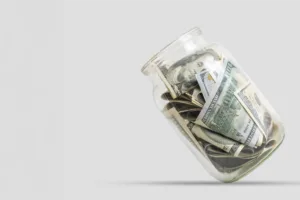Emergency Fund Essentials How Much to Save and Where to Keep It

Financial security is a goal many of us share. Yet, unexpected expenses can throw even the best-laid plans into disarray. Enter the emergency fund. This financial safety net is designed to cover unforeseen costs, from medical bills to sudden job loss.
But how much should you save in your emergency fund? And where should you keep it for both safety and accessibility? These are the emergency fund essentials we’ll explore in this article. We’ll guide you on how to determine the right amount to save, and the best places to store your emergency savings.
Understanding the Importance of an Emergency Fund
An emergency fund serves as your financial cushion during life’s unpredictable moments. It can cover unexpected costs like car repairs or medical bills, ensuring you’re prepared for the unexpected.
Without an emergency fund, you may have to rely on high-interest credit options. This can lead to a cycle of debt, which adds stress to already challenging situations. Saving for emergencies protects your financial stability. This stability is crucial for long-term financial health and peace of mind. In essence, an emergency fund isn’t just money set aside—it’s a strategic component of effective financial planning.
How Much Should You Save in Your Emergency Fund?
Determining the right amount for your emergency savings depends on various factors. Generally, it’s suggested to save enough to cover 3-6 months of living costs. This range provides a solid buffer against temporary financial setbacks.
For those with stable income, a 3-month cushion may suffice. In contrast, individuals with less reliable jobs might need 6-12 months’ worth of savings.
Here’s a simple framework to consider:
- 3-6 Months: Stable income or dual-income households.
- 6-9 Months: Freelancers, contractors, or those with seasonal employment.
- 9-12 Months: High-risk health or unstable job market.
Job security plays a key role. If your job is stable, you might lean toward the lower end of the spectrum. Health risks should also factor into your savings plan. Higher health risks call for a larger fund.
Additionally, personal comfort with risk affects how much you save. Some prefer larger emergency funds for extra peace of mind. Lastly, calculate your monthly living expenses to accurately determine your savings target. This will give clarity and direction for your saving efforts.
Factors Influencing Your Emergency Fund Size
Several factors shape how much you should save in your emergency fund. First, consider job stability. A more volatile career may necessitate a larger fund.
Health considerations also influence your savings amount. Health-related emergencies demand readiness, often translating to higher fund requirements. The number of dependents in your household impacts your emergency needs, too. More dependents typically require a larger buffer to maintain family stability.
Geography affects cost of living and should factor into your savings decision. Higher living costs might necessitate greater savings. Lifestyle is another important consideration. Reflect on how much money you need to maintain your standard of living during an emergency.
Lastly, individual risk tolerance guides how much money you set aside. A more conservative approach often requires a larger fund, offering greater peace of mind.
Starting Your Emergency Fund: Practical Steps
Embarking on building an emergency fund requires practical steps. First, pinpoint a savings amount that feels manageable. Begin with a realistic starter goal, like $500.
It’s crucial to view your budget as a tool, not a constraint. Dedicate part of your budget solely to emergency savings. Also, automate your savings to make consistent contributions easier. This helps in ensuring that saving becomes a seamless part of your routine. Finally, gradually increase the amount you save. As your finances improve, raise your contributions to build a robust financial cushion.
Set a Starter Goal
Setting a starter goal helps in making the process approachable. Consider aiming to save $500 initially. This creates a firm foundation and builds confidence. Once you hit this milestone, push further. A $1,000 target might be a suitable next step. Gradually, you build a habit that strengthens your financial security.
Create a Budget for Savings
Crafting a budget lets you see where your money goes. Assign a portion specifically for building an emergency fund. This prioritizes savings and reduces impulsive spending. A budget empowers you to organize finances effectively. It gives clarity on how to balance daily expenses and future security needs.
Automate Your Savings
Automating your savings ensures consistency without extra effort. Set up automatic transfers from your checking to savings accounts. Regular deductions mean you won’t need to remember saving each month. Automation secures your financial discipline even amid busy schedules.
Increase Savings Over Time
As your income grows, so should your savings. Reevaluate your contribution amounts periodically. Adapting your savings rate ensures continued progress towards your fund goals. Scaling up savings also maximizes potential interest earnings over time.
Best Places to Keep Your Emergency Fund
Choosing the right place for your emergency fund is pivotal. Accessibility and safety should guide your decision. You’ll want a balance between liquidity and earning potential.
A high-yield savings account often provides the best return. It combines ease of access with a decent interest rate. Money market accounts are also worth considering. They typically offer higher yields than regular savings accounts.
Certificates of Deposit (CDs) can be an option if withdrawing money infrequently. However, they may come with penalties for early withdrawals. It’s wise to diversify your fund across various accounts. This diversifies risk and maximizes interest income.
Some popular account options include:
- High-Yield Savings Accounts
- Money Market Accounts
- Certificates of Deposit (CDs)
Assess each account type against your needs. This helps tailor an emergency fund strategy that’s right for you.
High-Yield Savings Accounts
High-yield savings accounts shine for emergency funds. They offer higher interest rates than traditional savings accounts. This ensures your money grows more effectively over time. These accounts are usually easy to access. They allow quick transfers and withdrawals. Ensure the account you choose is FDIC insured for your peace of mind.
Money Market Accounts
Money market accounts merge features of savings and checking accounts. They often provide higher yields alongside easy access. These accounts usually permit limited monthly transactions, which aids discipline. You may find their slightly higher minimum balance a challenge. But their competitive interest rates often make them a worthwhile consideration.
Certificates of Deposit (CDs) / Savings Certificates
CDs can store part of your emergency fund. They offer fixed interest rates over a set term. This stability can be attractive if you don’t anticipate needing the funds soon. However, there is a downside. Early withdrawals might incur penalties. Use CDs for a portion of your fund to balance liquidity with higher returns.
Protecting and Growing Your Emergency Fund
An emergency fund should not remain static. It’s essential to ensure it retains purchasing power over time. Inflation can erode the value of your savings if unaddressed.
Monitoring interest rates helps optimize where you keep your funds. Selecting accounts with competitive rates boosts growth. Consistently growing your fund offers a buffer against unexpected costs. Use windfalls, such as bonuses, to boost your savings.
Routinely re-evaluate your strategy to keep pace with financial changes. This proactive approach ensures your fund remains robust and effective.
Adjusting for Inflation and Interest Rates
Inflation can silently reduce your fund’s value. Periodically increase your savings to counteract this effect. Keep an eye on interest rates to maximize returns. Switch accounts if better options arise. This approach maintains the strength and vitality of your fund over time.
Regular Reviews and Adjustments
Regular reviews of your emergency fund are crucial. They help align it with current financial needs. Consider changes in expenses or life circumstances. Adjust savings goals as necessary. This ensures that your emergency fund stays relevant and effectively supports your financial security.
The Broader Benefits of Having an Emergency Fund
An emergency fund offers more than just a financial cushion. It provides psychological benefits that improve overall well-being.
Having savings stashed for emergencies reduces stress. You gain confidence knowing you’re prepared for uncertainties. The security of an emergency fund enhances decision-making. You’re not pressured to make hasty financial choices.
This readiness improves your ability to support others in need. It fosters generosity and community resilience.
Financial Peace of Mind
Financial peace of mind is a priceless benefit of an emergency fund. Knowing you’re covered makes life’s uncertainties more manageable. With robust savings, daily worries diminish. This relief allows you to focus on life’s joys and challenges with less stress.
Freedom and Flexibility
An emergency fund enhances your freedom. It provides flexibility to pursue opportunities without financial constraints.
You can make bold life choices, like changing careers or relocating, with confidence. This financial freedom empowers more intentional living.
The Lifelong Value of an Emergency Fund
An emergency fund is a cornerstone of financial health. It shields against life’s unpredictabilities, offering security and peace.
Building this fund reflects smart financial planning. It’s an investment in stability, enriching both the present and future with resilience and assurance.
- Previous
- Navigating Financial Changes


